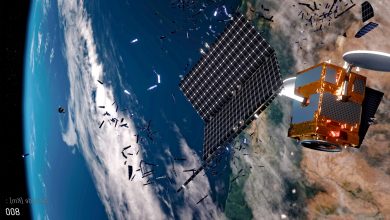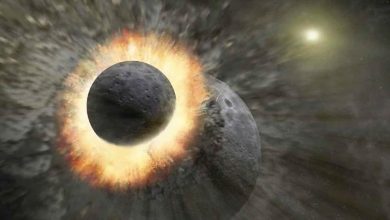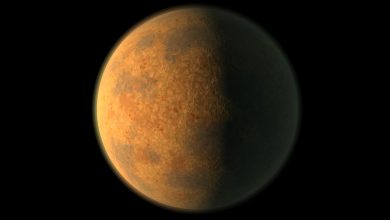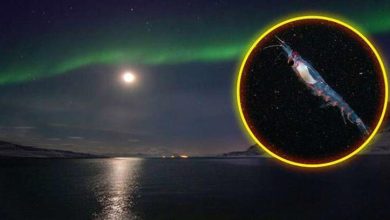Latest Articles
-
Dec- 2021 -4 DecemberSpace

Russian Anti-Satellite Weapon Test: What Happened and What To Do Now?
Lead Image: If a satellite is destroyed, the debris fans out in orbit and poses serious threats to other satellites or crewed spacecraft. Credit: ESA/ID&Sense/ONiRiXEL On November 15, 2021, U.S. officials announced that they had detected a dangerous new debris field in orbit near Earth. Later in the day, it was confirmed that Russia had destroyed one of its old satellites in a test of an anti-satellite weapon. Wendy Whitman Cobb is a space security researcher. She explains what these weapons are and why the debris they create is a problem now – and in the future. What do we…
Read More » -
4 DecemberAstronomy

How and When the Earth and Moon Formed
Lead Image: Artist impression of the Moon-forming event. Credit: NASA/JPL-CalTech/T. Pyle The Earth formed over 4.6 billion years ago out of a mixture of dust and gas around the young sun. It grew larger thanks to countless collisions between dust particles, asteroids, and other growing planets, including one last giant impact that threw enough rock, gas, and dust into space to form the moon. Although the rocks that record the earliest parts of Earth’s history have been destroyed or deformed by more than four billion years of geology, scientists can use modern rocks, moon samples, and meteorites to figure out…
Read More » -
4 DecemberTechnology

Sound Science: Great Headphones Blend Physics, Anatomy and Psychology
Lead Image: Headphone designers have to balance scientific limitations with human preferences. What you like to listen to is also important for choosing the right pair. Between music, podcasts, gaming, and the unlimited supply of online content, most people spend hours a week wearing headphones. Perhaps you are considering a new pair for the holidays, but with so many options on the market, it can be hard to know what to choose. I am a professional musician and a professor of music technology who studies acoustics. My work investigates the intersection between the scientific, artistic and subjective human elements of…
Read More » -
4 DecemberAstronomy

Tread Lightly: Strange “Eggshell Planets” Possible Around Other Stars
Lead Image: ‘Eggshell planets’ are rocky worlds that have an ultra-thin outer brittle layer and little to no topography. Here, an artist’s rendition of such an exoplanet. Credit: NASA Strange ‘eggshell planets’ are among the rich variety of exoplanets possible, according to a study from Washington University in St. Louis. These rocky worlds have an ultra-thin outer brittle layer and little to no topography. Such worlds are unlikely to have plate tectonics, raising questions as to their habitability. Only a small subset of extrasolar planets are likely eggshell planets. Planetary geologist Paul Byrne, first author of the new modeling study in…
Read More » -
4 DecemberEnvironment

Rhythms of the Krill: Exploring Response to Visual Changes During Arctic Night
Diffuse sunlight, moonlight, aurora, and artificial light can all be seen during the Arctic Polar night, including near Kongsfjorden, Svalbard. Svalbard is an archipelago northeast of Greenland. When it is lightest in the Arctic polar night, usually around the middle of the day known as midday twilight, Arctic krill (inset) know to swim down to the bottom in order to hide from predators. When it is darkest in the Arctic polar night, they swim to the surface in search of bioluminescent food. Credit: Photo by Geir Johnsen, Photo illustration by Tammy Beeson New research explores animals’ visual rhythms during the…
Read More »










